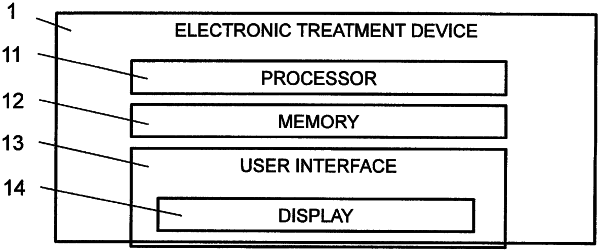| CPC G06T 19/006 (2013.01) [G06F 3/017 (2013.01); G06T 2200/24 (2013.01)] | 13 Claims |

|
1. An electronic apparatus configured to provide a treatment for a psychological anxiety disorder, the electronic apparatus comprising:
a memory storing at least one instruction;
a user interface comprising a display configured to display a plurality of images; and a processor which is, by executing the at least one instruction, configured to: based on a first user input received through the user interface, generate a first dynamic image comprising an expanding graphical element among the plurality of images, and render the first dynamic image on the display such that an expansion is centered on a point located in a central region of the display, generate a graphical turning element which is rendered on the display in a first state and subsequently rendered on the display in a second state different from the first state, among the plurality of images, render, on the display, a full-body image of a user in a pre-defined orientation, a predefined location, and a pre-defined size, among the plurality of images, generate a graphical switch element which is rendered on the display in a first state and subsequently rendered on the display in a different second state, among the plurality of images and generate a second dynamic image comprising a contracting graphical element among the plurality of images, and render the second dynamic image on the display such that a contraction is centered on the point located in the central region of the display, wherein the processor is further configured to: receive, through the user interface the first user input comprising an indication of a first stress level of the user, prior to rendering the first dynamic image, receive, through the user interface, a second user input comprising an indication of a second stress level of the user, subsequent to rendering the second dynamic image, and determine whether the stress level of the user has been reduced by comparing the second stress level to the first stress level.
|